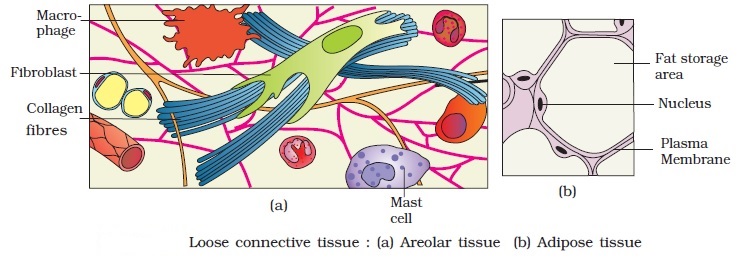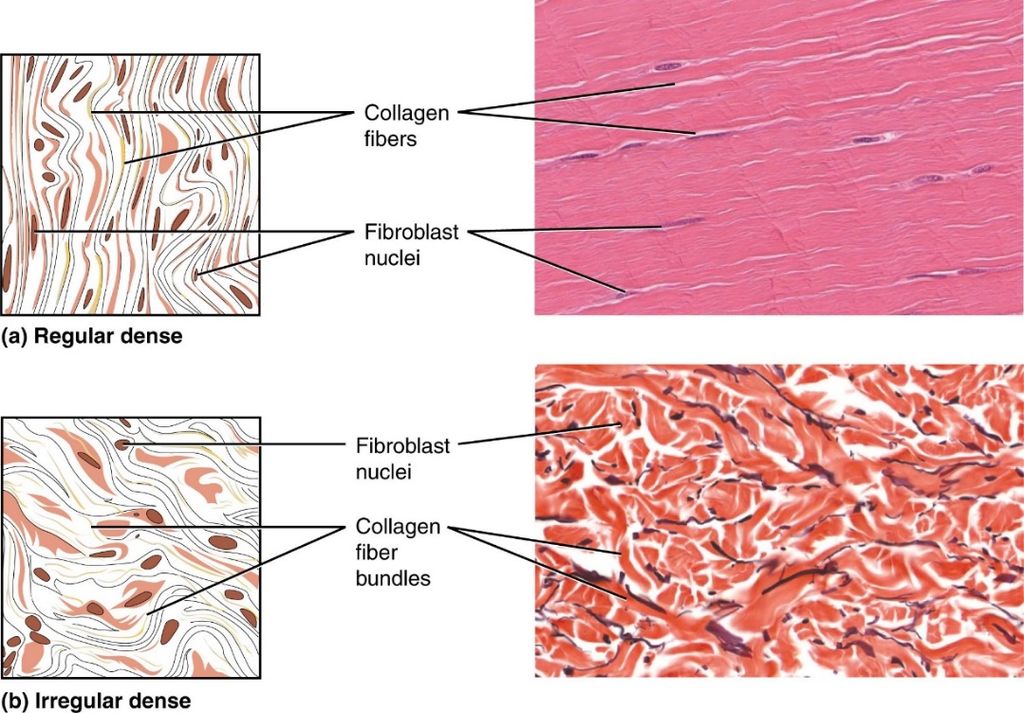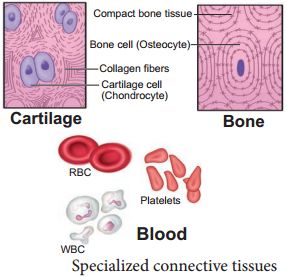Connective Tissue
In the bodies of sophisticated animals, connective tissues are the most abundant and widely dispersed. Connective tissues get their name from their unique ability to join and support other body tissues and organs. They include soft connective tissues as well as specialized forms such as cartilage, bone, adipose tissue, and blood. Cells in all connective tissues, except blood, secrete collagen or elastin fibers, which are structural proteins. The fibers provide the tissue its strength, elasticity, and flexibility. These cells also release modified polysaccharides, which form a matrix between cells and fibers (ground substance). There are three forms of connective tissue:
1. Loose connective tissue: Areolar tissue present beneath the skin, is loose connective tissue with cells and fibers loosely distributed in a semi-fluid ground substance. It frequently acts as a support structure for epithelium. Fibroblasts (cells that generate and secrete fibers), macrophages, and mast cells are all present. Another form of loose connective tissue found primarily beneath the skin is adipose tissue. This tissue's cells arespecialized for fat storage. Excess nutrients are converted to lipids and stored in this tissue if they are not utilized right away.

2. Dense connective tissue: The dense connective tissues are densely packed with fibers and fibroblasts. Dense regular and dense irregular tissues have a regular or irregular pattern in their fiber orientation.Collagen fibers are found in rows between several parallel bundles of fibers in dense regular connective tissues. Tendons that connect skeletal muscles to bones and ligaments that connect two bones are examples of this tissue. Fibroblasts and numerous fibers (mainly collagen) are orientated differently in dense irregular connective tissue. The skin contains this tissue.

3. Specialised connective tissue: Specialized connective tissues include cartilage, bones, and blood. The cartilage intercellular substance is firm and malleable, and it resists compression. Chondrocytes (tissue cells) are encased in little cavities within the matrix they secrete. In adults, most cartilages in vertebrate embryos are replaced by bones. In adults, cartilage can be found in the tip of the nose, outer ear joints, and between neighboring spinal column bones, limbs, and hands. Bones have a hard, non-pliable ground substance that is rich in calcium salts and collagen fibers, and this is what gives them their strength. It is the major tissue that gives the body its structural framework. Soft tissues and organs are supported and protected by bones.Lacunae are places where bone cells (osteocytes) can be found. The lengthy bones of the legs, for example, serve as weight-bearing structures. They also interact with the skeletal muscles that are linked to them in order to form blood cells in the marrow of some bones. Plasma, red blood cells (RBC), white blood cells (WBC), and platelets make up blood, which is a fluid connective tissue. It is the primary circulating fluid that aids in the transportation of a variety of chemicals.


 ACME SMART PUBLICATION
ACME SMART PUBLICATION
